Unit 7
Profit¶
| Word | Meaning |
|---|---|
| total revenue / TR | the amount a firm receives fro the sales of its output |
| total cost / TC | the market value of the inputs a firm uses in production (explicit costs) |
| profit / \Pi | the firm's total revenue minus its total cost =TR - TC |
| economic cost of production | all the oppotunity costs of making its output of goods and services |
| economic profit | TR - economic cost of production |
| accounting profit | TR - TC |
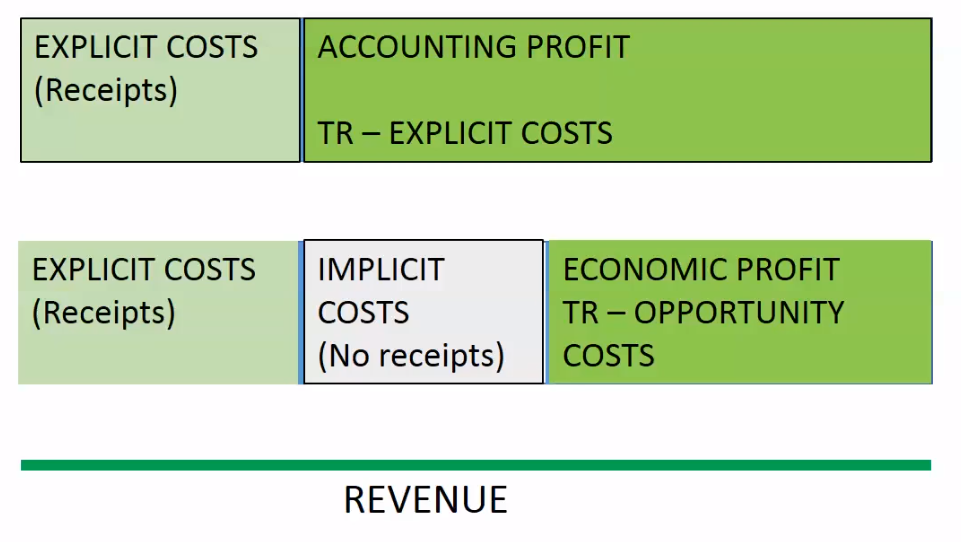
| Three Categories of Economic Profit | Meaning |
|---|---|
| positive economic profits | super high, unexpected profits for firms in that industry attract entrepreneurs and induce nre firms to the market P > ATC |
| economic losses | negative profits firms that consistently earn losses will eventually leave the industry P < ATC |
| normal (zero) economic profits | zero economic profits, positive accounting profit no new firms to join, no firms to quit P = ATC |
Production¶
| Word | Meaning |
|---|---|
| production function | the relationship between quantity of inputs used to make a good and the quantity of output |
| fixed inputs | inputs that cannot vary in quantity for some period of time (a factory, a machine) |
| variable inputs | inputs that can vary in quantity (labour) |
| short run | at least one input is fixed |
| long run | no inputs are fixed |
| total product / TP | amount of total products produced |
| marginal product / MP | change in output that arises from an additional unit of that input TP is maximized when the MP = 0 = slope of the production function = \frac{\Delta\text{total output}}{\Delta\text{number of inputs}}=\frac{\Delta Q}{\Delta L} |
| diminishing marginal product | the MP of any input will decrease as the quantity increases if there are fixed inputs |
| average product / AP | how many outputs each unit of input can produce = \frac{Q}{\text{number of inputs}} |
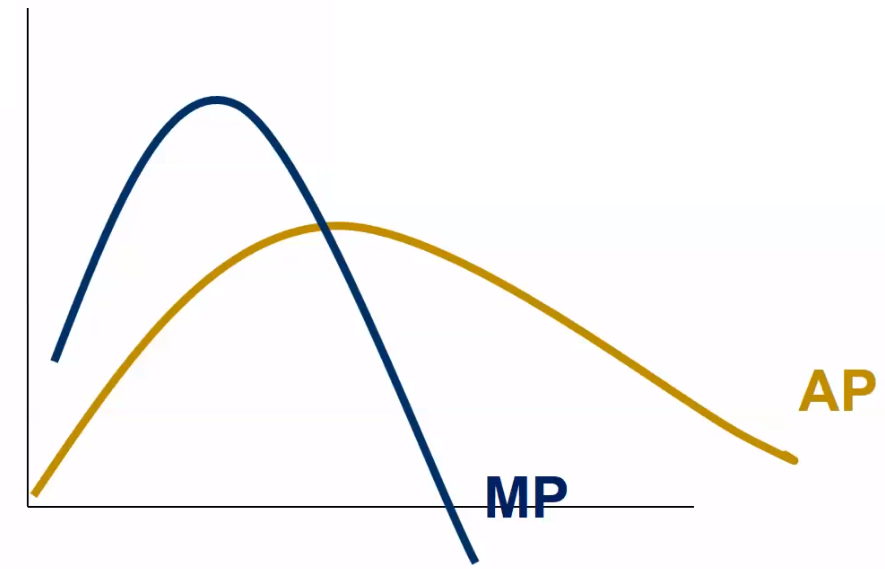
- MP = AP when AP at max
- When MP > AP, AP is increasing
- When MP < AP, AP is decreasing
Short Run Costs of Production¶
| Word | Meaning |
|---|---|
| total fixed costs / TFC | costs that do not vary with the quantity of output produced (rent, loan payments) (only in short run) |
| total variable costs / TVC | costs that vary with the quantity of output produced (labour costs, raw material costs) |
| total cost / TC | = total fixed costs + total variable costs = TFC + TVC |
| average fixed cost / AFC | =\frac{TFC}{Q} decreases as more goods are produced |
| average variable cost / AVC | =\frac{TVC}{Q} starts high, falls and then rises again as more goods are produced |
| average total cost / ATC | cost of each typical unit of product = \frac{TC}{Q}=AFC+AVC starts high, falls and then rises again as more goods are produced |
| marginal cost / MC | the addition to total cost from producing one more unit of output basically an inverse of marginal product starts high, decreases, then increases as more goods are produced = slope of the total cost function =\frac{\Delta\text{total cost}}{\Delta\text{total output}}=\frac{\Delta TC}{\Delta Q} |
| opearting at capacity | the firm's ATC is minimized |
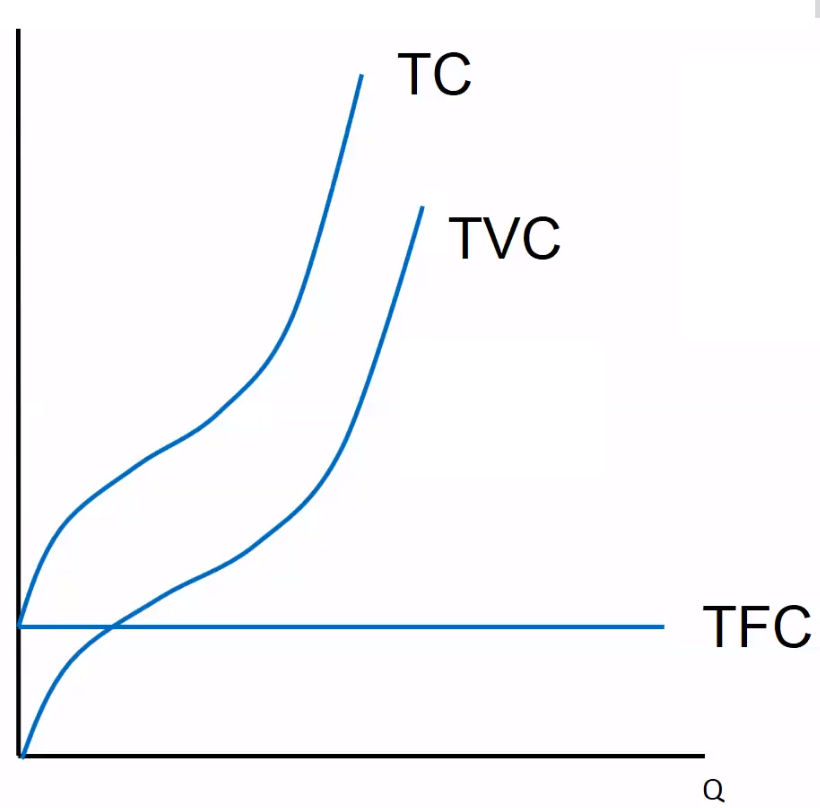
in short run:
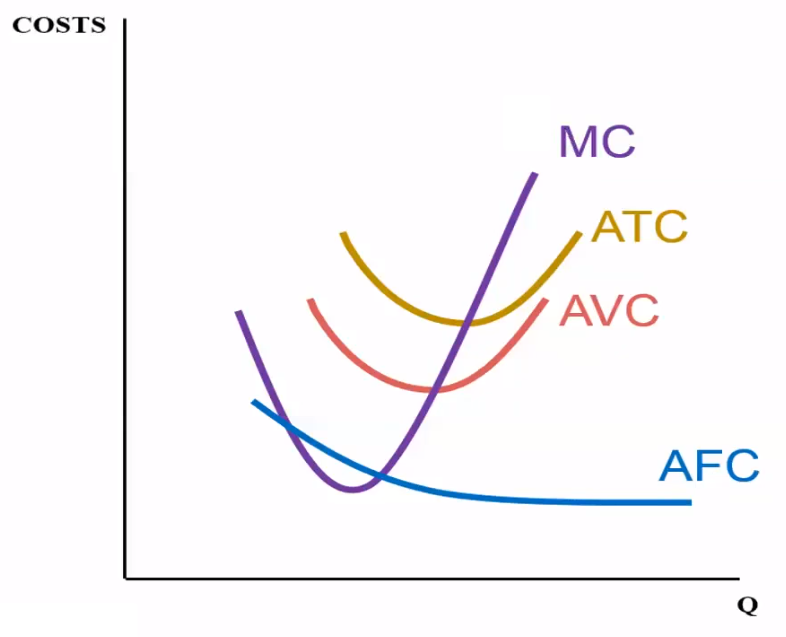
- MC intersects AVC at min AVG
- When MC < AVC, AVC is decreasing
- When MC > AVC, AVC is increasing
- MC intersects ATC at min ATC
- When MC < ATC, ATC is decreasing
- When MC > ATC, ATC is increasing
Long Run Costs of Production¶
| Word | Meaning |
|---|---|
| long run average curve / LRAC | in the long run, cost of each typical unit of product |
| efficient scale | the level of output Q which minimizes LRAC every Q between Q1 and Q2 are at efficient scale 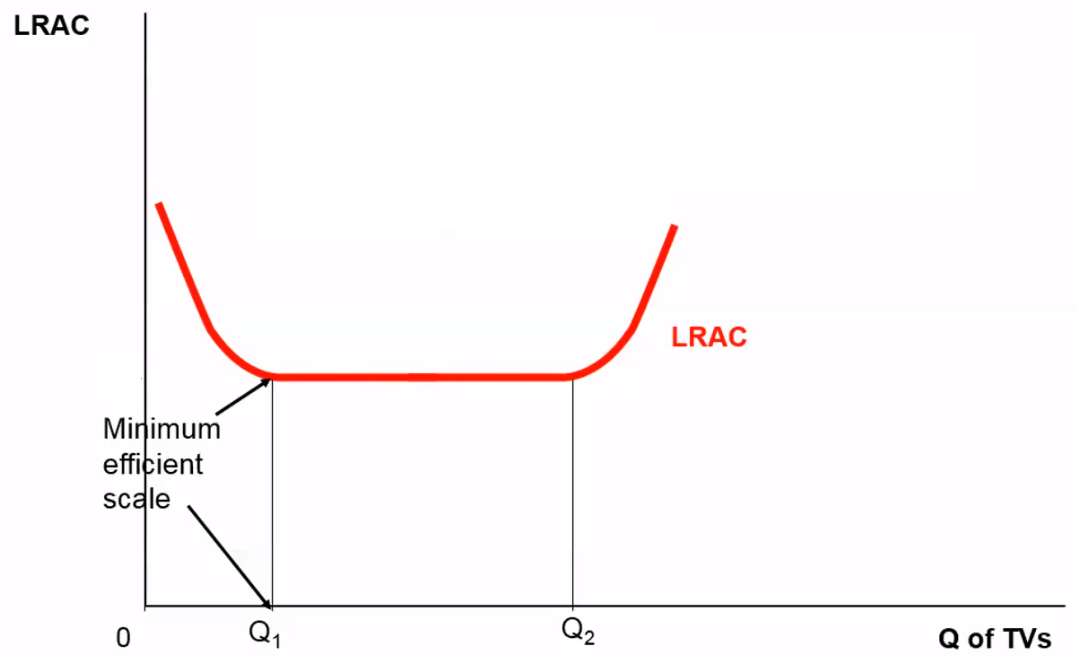 |
| increasing returns to scale / IRS / economies of scale / EOS / scale echonomies |
LRAC falls as Q increases occur when increasing producing allows greater specialization |
| decreasing returns to scale / DRS / diseconomies of scale / DOS |
LRAC rises as Q increases due to coordination problems in large organizations |
| constant returns to scale / CRS | LRAC stays the same over a range of Q |
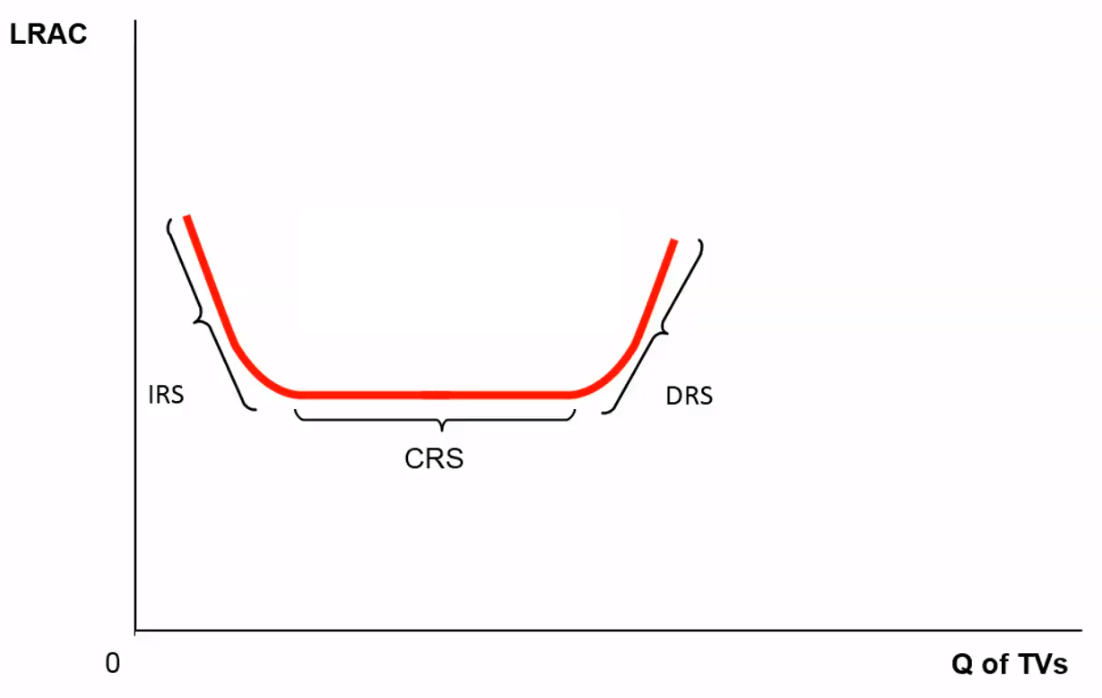 |
|
Last update:
November 15, 2021
Created: October 30, 2021
Created: October 30, 2021